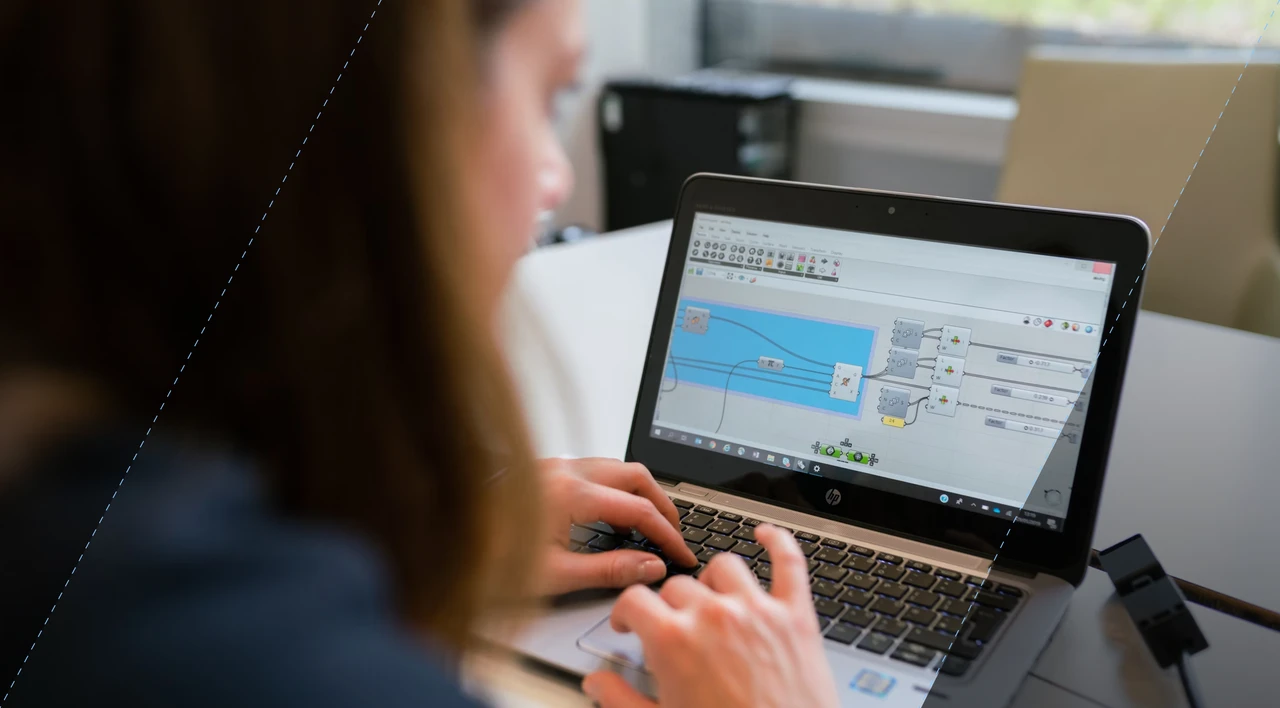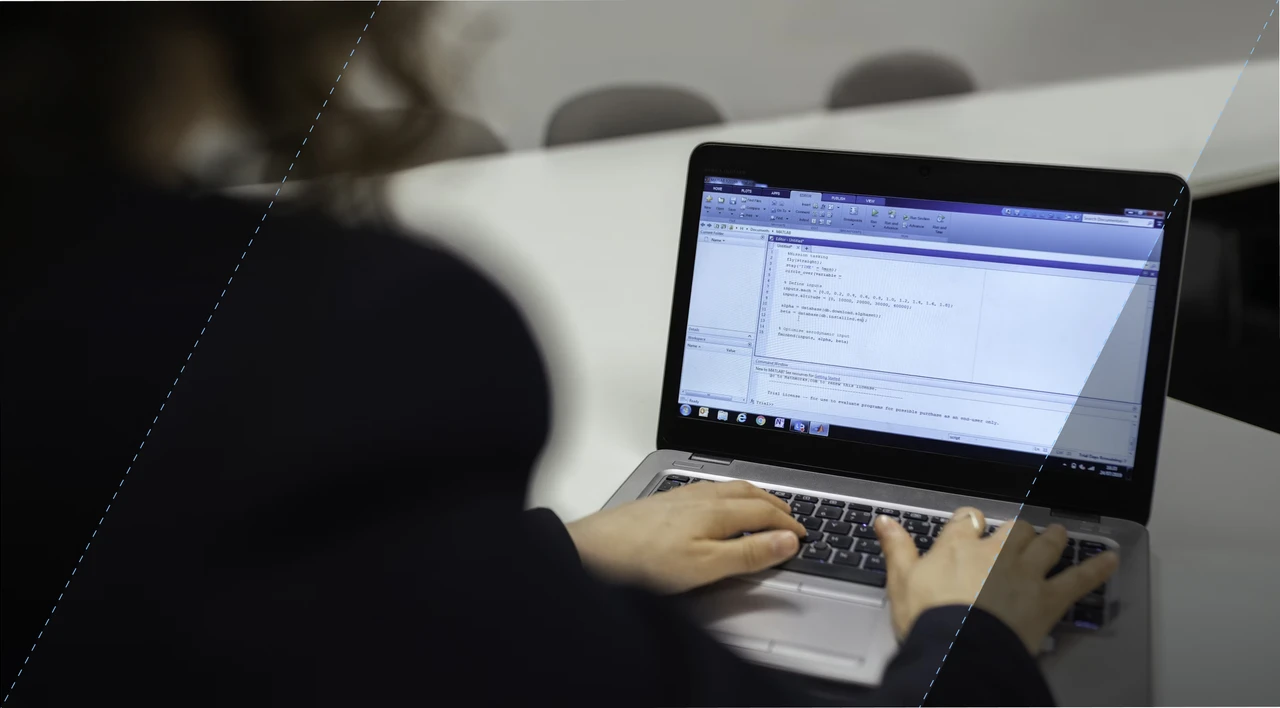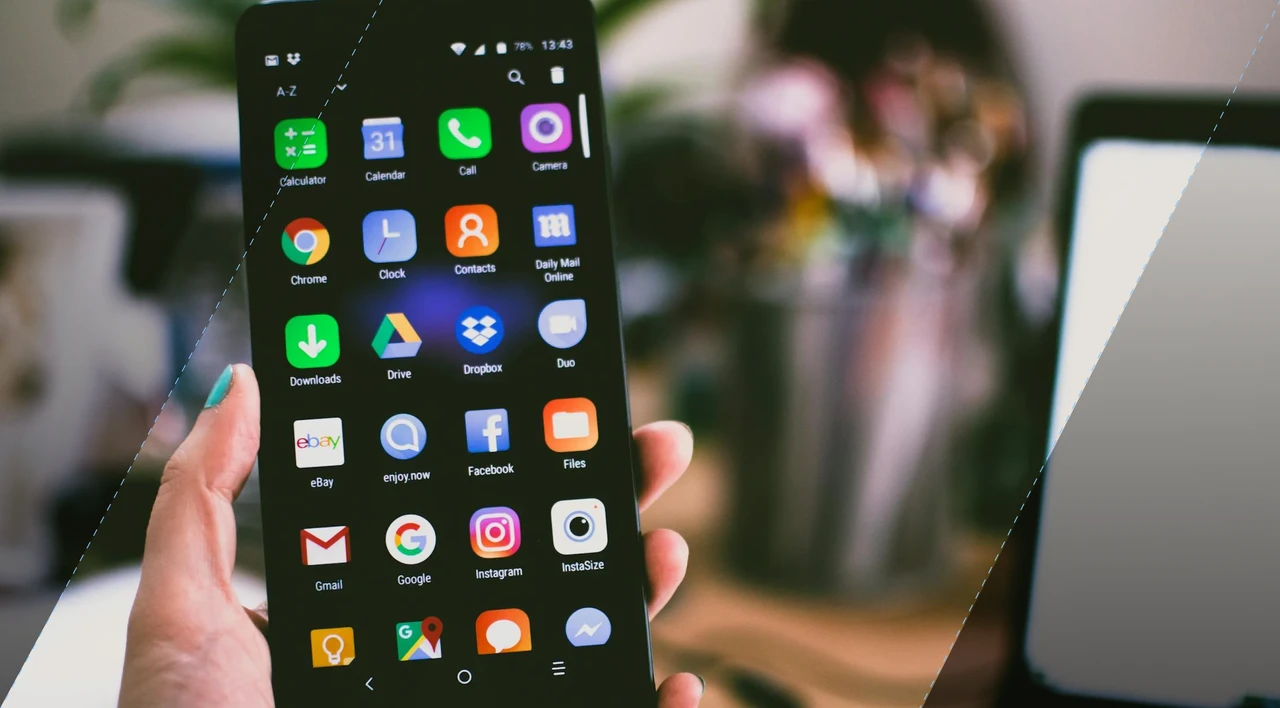Contents
Contents
Have you ever wondered about the origin of the term “haptic”? In this article, we will explore the roots of “haptic” and how it relates to touch.
We’ll also look at how haptic technology is changing the way we interact with our digital devices and its various uses in different industries.
Plus, we’ll share insights into how our team at Flatirons is using haptic technology to enhance app development and improve user experiences. Join us as we dive into the world of haptic technology.
Key Takeaways:
- The term “haptic” is derived from the Greek word “haptikos.”
- Haptic technology simulates the sense of touch in digital interactions.
- Haptic feedback is essential in creating truly immersive user experiences.
- Haptic technology is used in a wide range of applications, from video games to automotive systems.
- Haptic interfaces utilize various technologies to provide sensory feedback and enable intuitive interaction with digital content.
The Science of Touch and Haptic Technology
To truly understand haptic technology, we need to delve into the science of touch and explore the senses behind it. Our sense of touch is incredibly complex, allowing us to perceive a vast range of tactile sensations, from pressure and texture to temperature and vibration.
This is where haptic technology comes in – it aims to replicate these sensations in the digital world, providing a more immersive and realistic experience. Haptic devices use various technologies such as ultrasonic waves and vibrotactile feedback to simulate these sensations, creating a more intuitive and natural interaction with digital content.
As haptic technology continues to advance, we are able to reach new levels of interactivity and engagement. Whether it’s through touch screens or haptic gloves, haptic technology is transforming the way we interact with the digital world, providing a more seamless and natural experience.
The Derived Greek Word: Haptic
Have you ever wondered why it’s called haptic? Well, the term has its origins in the ancient Greek word “haptikos,” which means “able to come into contact or touch.” Today, the word has evolved to encompass touch-based technology and the science behind it.
Haptic technology has become increasingly popular in various fields, including virtual reality (VR) and augmented reality (AR).
In VR, haptic feedback allows users to experience a more immersive environment by simulating real-world sensations. In AR, this technology enhances the user experience through tactile feedback when interacting with digital objects in the real world.
|
Field |
Usage |
|
Virtual Reality |
Simulating real-world sensations |
|
Augmented Reality |
Enhancing user experience through tactile feedback |
As haptic technology continues to advance, we can expect even more innovative applications in the future. From gaming to healthcare to education, haptic technology is opening up new possibilities for enhancing our digital interactions.
Haptic Feedback: Enhancing Digital Interactions
When it comes to digital interactions, haptic feedback is a game-changer. This technology provides tactile feedback that can engage your sense of touch, enhancing your overall digital experience.
There are different types of haptic feedback, from simple vibrations to precise force feedback. Vibration is the most common haptic feedback as it’s easy to implement and simulate. When a controller vibrates, it generates a low-frequency vibration, providing a sensation that intensifies the interaction. The force feedback offers a more sophisticated approach, generating advanced haptic sensations, such as resistance, inertia, or pressure depending on the specific context.
Haptic feedback is designed to simulate real-world sensations, providing you with a more immersive experience. Tactile feedback or haptic sensations are crucial when it comes to giving realistic and intuitive feedback to the user. Haptic feedback can be simulated through various controllers and interfaces, such as touch screens or haptic gloves, creating a seamless blend between the digital and physical worlds.
Overall, haptic feedback is a significant step forward for digital interactions, allowing users to experience a range of sensations that improve the overall immersive experience.
Applications of Haptic Technology
Thanks to its ability to simulate touch, haptic technology has become increasingly popular in a variety of fields. Let’s take a closer look at the applications of this technology in the digital world:
- Video Games: Haptic feedback can enhance the gaming experience by providing tactile responses to actions in the game. For example, feeling the recoil of a virtual weapon or the rumble of a car engine.
- Wearables: Haptic technology is also used in wearables, such as smartwatches, to provide notifications and alerts through vibrations.
- Mobile Phones: Haptic feedback can be utilized in mobile devices, such as providing tactile responses when typing or navigating on the screen.
- Automotive: Some cars are equipped with haptic technology that provides tactile feedback to drivers, such as alerting them when they are too close to an object on the road.
As haptic technology continues to evolve, it’s exciting to consider the many ways it will be used to enhance our interactions with the digital world.
The Transformative Impact of Haptic Feedback in Apps
Integrating haptic feedback into your app’s development, a process expertly navigated by teams like Flatirons can significantly elevate the user experience. This technology adds a layer of tactile interaction, making your app not only visible and audible but also palpable.
- Creating Lifelike Experiences: Haptic feedback infuses apps with a sense of realism. In gaming or VR applications, particularly those developed by Flatirons, haptic feedback allows users to experience the texture of virtual environments or the force of actions within a game. This results in a deeply immersive experience.
- Enhancing User Navigation: The implementation of haptic feedback in apps can simulate the sensation of pressing physical buttons on a touchscreen. This tactile feedback can simplify navigation, minimize user errors, and increase overall satisfaction with the app.
- Boosting Accessibility: Haptic feedback is especially beneficial for users with visual impairments. It provides an alternative way to interact with and navigate apps, aligning with mobile app development company Flatirons’ commitment to creating accessible and inclusive technology.
- Providing Instantaneous Response: A quick vibration or a light tap can instantly inform users about their in-app actions, eliminating the need to rely solely on visual or auditory cues. This method of communication is both subtle and effective.
Enriching Routine Interactions: Haptic feedback can transform ordinary app interactions into more engaging experiences. For instance, the feel of a vibration when setting a timer or receiving a notification adds a dynamic aspect to everyday app usage.
At Flatirons, we customize the integration of haptic feedback to bolster both the functionality and the user experience of our apps. Whether it’s a fitness app where users can physically sense their progress or a productivity tool that provides tactile feedback upon task completion, our focus remains on crafting interactive and captivating app experiences.
Haptic Interfaces: Bridging the Gap Between Digital and Physical Worlds
Haptic interfaces offer a bridge between the digital and physical worlds, enabling you to experience digital content in a more intuitive and tactile way. These interfaces use various technologies to provide sensory feedback, simulating touch, and pressure sensations to create a more realistic and immersive experience.
Haptic Gloves
Haptic gloves are a popular form of haptic interface, providing precise hand tracking and tactile feedback. These gloves use sensors to track the movements of your hands and fingers, translating them into digital inputs. Haptic feedback is then delivered through small motors or actuators in the gloves, providing the sensation of touch and pressure.
Touch Screens and Trackpads
Touch screens and haptic feedback in headphones and trackpads are other common forms of haptic interface, utilizing touch-based interactions to simulate the sensation of touch. These interfaces provide immediate sensory feedback, responding to your touch with a range of haptic effects, such as vibrations or clicks.
Hand Tracking
Hand tracking is an emerging form of haptic interface that uses sensors to detect and track the movements of your hands and fingers in 3D space. This technology allows you to interact with digital content in a more intuitive way, using natural hand gestures and movements.
|
Haptic Interface |
Technology Used |
Examples |
|
Haptic Gloves |
Sensors, motors, actuators |
Noitom Hi5 VR Gloves, HaptX Gloves |
|
Touch Screens |
Capacitive touch, vibrations |
Smartphones, tablets, kiosks |
|
Trackpads |
Capacitive touch, haptic feedback |
Laptops, game controllers |
|
Hand Tracking |
Sensors, cameras |
Oculus Quest, Leap Motion |
With haptic interfaces, you can explore the digital world with a more tactile and intuitive approach. Whether you are using haptic gloves to create a more immersive virtual reality experience, or using a touch screen to navigate your smartphone, these interfaces provide an essential link between the digital and physical worlds.
The Essential Role of Haptic Feedback
If you want to create truly immersive experiences in virtual reality and other immersive technologies, haptic feedback is essential.
Through the use of technologies like ultrasonic and vibrotactile systems, developers can generate tactile effects in mid-air, further enhancing your immersion and understanding of digital information.
These systems work by creating ultrasonic vibrations or small vibrations on your skin, which trick your senses into perceiving tactile sensations in mid-air.
|
Type of Haptic Feedback |
Ultrasound |
Vibrotactile |
|
Description |
The use of ultrasonic waves to create sensations in mid-air |
The use of small, vibrating motors to create tactile feedback |
|
Examples |
A haptic feedback suit for virtual reality gaming |
A controller that vibrates to simulate recoil in a first-person shooter game |
With haptic feedback, you can feel like you’re truly a part of the virtual environment you are experiencing.
For instance, in a virtual reality game where you’re exploring the ocean floor, haptic feedback can make you feel like you’re really touching the plants and creatures around you. This, in turn, helps to create a more convincing and engaging experience, one that you won’t soon forget.
Conclusion
Now that you know the origins of haptic technology and why it is called haptic, you can appreciate its fascinating role in enhancing digital interactions through the science of touch. By simulating tactile sensations, haptic feedback has revolutionized how we interact with digital content in fields such as virtual reality, video games, wearables, and mobile phones. With haptic interfaces bridging the gap between the digital and physical realms, you can take control of your digital experience in a more intuitive and immersive way. Thanks for reading!
FAQ
Why is it called haptic?
Haptic technology is derived from the Greek word “haptikos,” which means “pertaining to touch.” This term accurately represents the science of touch that haptic technology aims to replicate in the digital world.
How does haptic technology relate to the science of touch?
Haptic technology is closely connected to the science of touch, as it aims to replicate tactile sensations experienced through the sense of touch. By simulating these sensations, haptic technology enhances digital interactions and provides a more immersive user experience.
What is the meaning behind the derived Greek word “haptic”?
The term “haptic” has its roots in the Greek language, specifically the word “haptikos.” It represents touch-based technology and has become synonymous with virtual reality and augmented reality experiences.
How does haptic feedback enhance digital interactions?
Haptic feedback is crucial in enhancing digital interactions by providing tactile sensations to the user. It can range from simple vibrations to more precise force feedback, creating a more immersive and realistic user experience with controllers and interfaces.
What are some applications of haptic technology?
Haptic technology finds applications in various fields, including video games, wearables, mobile phones, and automotive systems. It enhances the gaming experience, enables tactile interactions with mobile devices, and improves safety and user experience in automotive infotainment systems.
How do haptic interfaces bridge the gap between digital and physical worlds?
Haptic interfaces, such as haptic gloves, touch screens, trackpads, and hand tracking, facilitate a more intuitive and sensory-rich interaction with digital content. These interfaces use haptic technology to provide sensory feedback, bridging the gap between the digital and physical worlds.
Why is haptic feedback essential in immersive technologies?
Haptic feedback is essential in immersive technologies, such as virtual reality, as it enhances the user’s understanding and immersion in the virtual environment. Technologies like ultrasonic and vibrotactile systems generate tactile effects in mid-air, further enhancing the user’s experience and interaction with virtual content.
What is the role of haptic technology in modern digital interactions?
Haptic technology plays a significant role in modern digital interactions by simulating the sense of touch. It enables a more interactive and immersive user experience, allowing users to take their eyes off the screen and better understand and manipulate information using their sense of touch.
IoT Development Services
Harness the power of IoT with Flatirons' innovative IoT development services.
Get the CEO's Take
Handpicked tech insights and trends from our CEO.
IoT Development Services
Harness the power of IoT with Flatirons' innovative IoT development services.
Get the CEO's Take
Handpicked tech insights and trends from our CEO.

Record Information System (RIS) for Healthcare Data Management
Flatirons
Jul 02, 2025
Proof of Concept Examples: Validating Ideas in Action
Flatirons
Jun 30, 2025
Javascript Developer Salary Insights in the US
Flatirons
Jun 28, 2025
Powerful Electron Alternatives for Cross-Platform App Development
Flatirons
Jun 28, 2025
Why Is Python So Popular – Explained for Beginners
Flatirons
Jun 28, 2025
What is a White Label App?
Flatirons
Jun 28, 2025